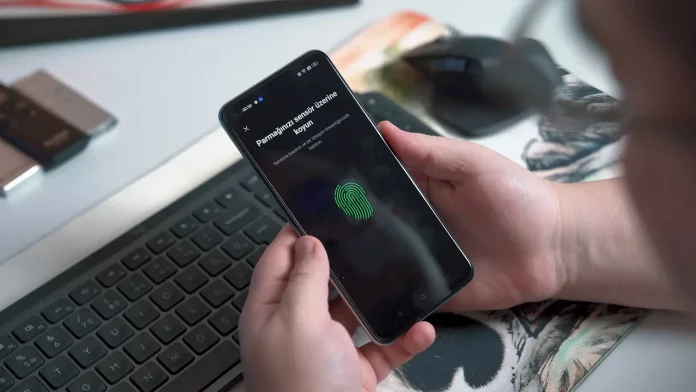In the rapidly evolving landscape of digital security, the quest for robust access control measures has led to the forefront of biometric innovations. As traditional methods face increasing vulnerabilities, biometrics offers a promising frontier, providing a secure and convenient means of authentication.
In this article, we will discuss some of the cutting-edge developments shaping the future of secure access.
An Overview of Biometrics
In the world of cybersecurity, the system is shifting towards biometric authentication as a more secure and user-friendly alternative to traditional methods. Unlike passwords and PINs, which can be forgotten, shared, or easily hacked, biometrics leverage unique physical or behavioral attributes for identification.
This shift is marked by the growing recognition that everyone possesses distinct biological markers. This includes fingerprints, iris patterns, and even the cadence of their heartbeat. Thus, biometrics provides a personalized and virtually impenetrable layer of security, minimizing the risks associated with conventional access control.
Fingerprint Recognition
Fingerprint recognition, a trailblazer in the biometric domain, has evolved far beyond its initial applications. According to Android Authority, modern fingerprint sensors utilize advanced technologies like ultrasonic and capacitive sensors to create highly detailed maps of individual fingerprints.
This level of precision not only ensures enhanced security but also enables seamless integration into everyday devices, from unlocking smartphones to authorizing secure transactions. The three-dimensional mapping of fingerprints has significantly reduced false positives and negatives, making it a stalwart in the realm of secure access protocols.
Iris Scanning
Iris scanning, a sophisticated branch of ocular biometrics, leverages the intricate patterns of the iris to provide a secure means of access. The iris, with its unique and stable features, offers a high level of accuracy, making it resilient to attempts at forgery.
This technology is gaining traction in various sectors, from airports for identity verification to healthcare for patient authentication. Its non-intrusive nature, coupled with the speed of recognition, positions iris scanning as a futuristic solution for secure access.
Voice Recognition
Voice recognition technology, often referred to as the vocal password, is making waves in the biometric landscape. It captures and analyzes the unique vocal characteristics of individuals, such as pitch, tone, and cadence, to create a distinctive voiceprint.
According to Destination CRM, voice biometrics software functions by dissecting a person’s input audio into an individual sound spectrum. Two designs exist: active and passive authentication.
Active authentication entails customers repeating preset passphrases to form a unique voiceprint. Passive authentication analyzes conversations, creating a distinctive voiceprint for each caller. As the individual speaks, the system scrutinizes each sound, employing preprogrammed algorithms to match it with a preloaded signature.
Advancements in artificial intelligence have enhanced its adaptability to diverse linguistic nuances, making it an effective and versatile tool for secure access. Voice recognition is very convenient for users who struggle with traditional authentication methods. In addition, it also proves robust in scenarios where remote access or hands-free operation is crucial.
Face Recognition Technology
According to AU10TIX, face recognition technology stands at the forefront of biometric innovations, utilizing facial features for secure access. The latest advancements leverage artificial intelligence algorithms to analyze facial landmarks, expressions, and even three-dimensional facial structures.
While offering a convenient and contactless authentication method, face recognition technology does raise ethical considerations regarding privacy and surveillance. Striking a balance between security and individual rights is crucial as this technology becomes increasingly integrated into various facets of daily life. This includes everything from unlocking smartphones to airport security checks.
The continuous refinement of face recognition algorithms and ethical guidelines will shape its role in the future of secure access.
Vein Recognition
Vein recognition has emerged as a formidable biometric technology. Unlike surface-level features, veins remain hidden from plain view, adding an extra layer of security.
Vein recognition systems utilize near-infrared light to create a unique map of the vein patterns, making it exceptionally difficult to replicate or forge. Beyond secure access applications, this technology is finding relevance in healthcare for patient identification, where accuracy and reliability are paramount.
Heartbeat Biometrics
Heartbeat biometrics takes a novel approach by tapping into the rhythm of one’s heartbeat for secure access. The human heartbeat, characterized by its uniqueness and stability, offers a constant and reliable biometric signature. Biometric Update states that as per initial research, heartbeat can be implemented as an identity verification solution with an accuracy rate of 96.6%.
This emerging technology, often integrated into wearable devices, holds promise in scenarios where continuous and unobtrusive authentication is required. The heartbeat’s physiological uniqueness, combined with its real-time verification capabilities, positions it as an innovative and resilient solution in the ever-evolving landscape of biometrics.
In summary, the future of secure access is being reshaped by innovative biometric technologies, offering unparalleled levels of protection and user convenience. From advanced fingerprint recognition to the ethical considerations surrounding face recognition, each method introduces unique strengths.
As these technologies become integral to various aspects of daily life, the challenge lies in navigating the balance between heightened security and individual privacy. The fusion of biometrics with AI promises a seamless and adaptable approach. This helps create a digitally secure future where personal identity is safeguarded in diverse and user-friendly ways.



































